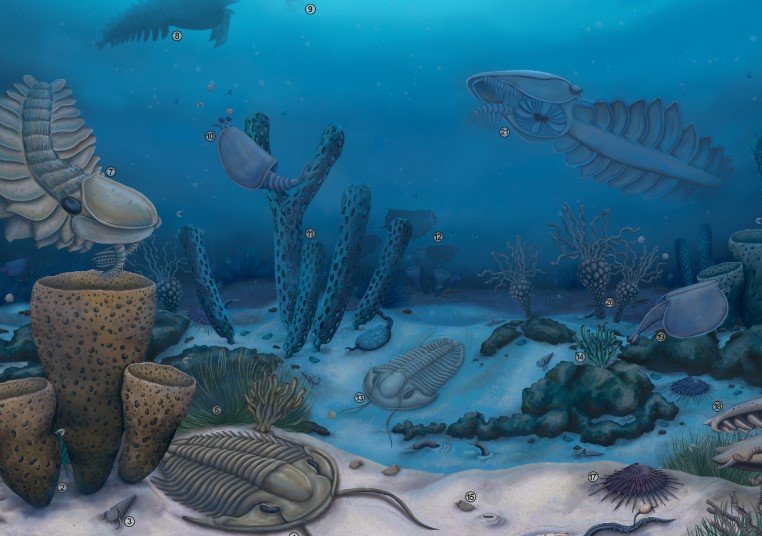Imagine living in a world where oxygen isn’t guaranteed. By day, the air is rich and invigorating. By night, it vanishes, leaving you struggling to breathe. For early ocean life half a billion years ago, this wasn’t a nightmare — it was reality. And strangely enough, this brutal existence might have fueled one of life’s greatest evolutionary leaps: the Cambrian Explosion.
Survival of the Toughest: How Fluctuating Oxygen Drove Early Evolution
For decades, scientists believed rising atmospheric oxygen levels created ideal conditions for life to diversify. More oxygen meant more energy, and more energy supposedly meant more complex creatures could thrive.
But fresh research challenges that assumption. Instead of stable, oxygen-rich seas fostering evolution, it was the punishing swings — abundant oxygen by day, suffocating lows by night — that pushed early animals to adapt or perish.
Using a cutting-edge computer model, researchers simulated how sunlight, temperature, and marine life interacted on the Cambrian seafloor. The results were striking: warm, shallow waters underwent drastic oxygen shifts. Daytime photosynthesis by marine algae flooded the water with oxygen. But when night fell, the algae consumed that oxygen through respiration, plunging the environment into anoxic — oxygen-deprived — conditions.
The animals that survived these wild daily swings weren’t the ones that thrived in perfect conditions. They were the ones tough enough to endure the extremes, evolving physiological tricks to manage feast and famine. Adaptation wasn’t optional — it was a matter of survival.

The Rise of Shallow Seas — and Evolution’s Playground
The Cambrian period wasn’t just marked by oxygen chaos. It was also a time of massive geological shifts. Earth’s ancient supercontinent, Rodinia, began to break apart, scattering land masses and creating vast, shallow coastal shelves.
These newly-formed seabeds weren’t just a change of scenery — they were a game-changer for life. More sunlight reached the ocean floor, supercharging photosynthesis and intensifying the oxygen cycle. The result? An evolutionary crucible where only the most adaptable creatures could flourish.
• Shallow waters gave algae more light — boosting oxygen production during the day. • Nighttime respiration consumed that oxygen just as fast, creating extreme daily shifts. • Animals that adapted to handle both highs and lows gained an evolutionary edge.
This dynamic environment likely explains the sudden explosion of diversity seen in Cambrian fossils. Anomalocaris, one of the period’s top predators, evolved large, complex eyes — perfect for spotting prey in clear, sunlit waters. Meanwhile, trilobites developed tough exoskeletons, helping them endure hostile, oxygen-starved nights.
Evolution’s Tough Love: Why Stress Might Be the Ultimate Catalyst
The idea that hardship fuels progress isn’t new — but applying it to evolution offers a fresh perspective. The Cambrian Explosion wasn’t a golden age of comfort. It was a survival story written in oxygen-starved waters.
Why does this matter today? Understanding how life adapted to harsh conditions in the past could offer insights into how species — including humans — might cope with modern environmental shifts. Climate change is creating its own version of the Cambrian oxygen rollercoaster, with ocean temperatures rising and oxygen levels dropping in some regions.
If history repeats itself, life might find a way to adapt. But as the Cambrian period reminds us, the survivors may look very different from the creatures that came before them.
